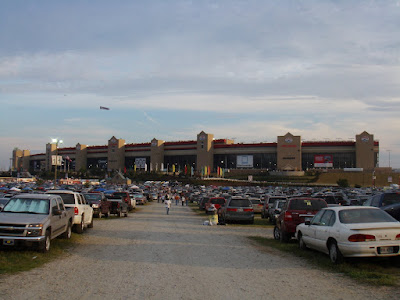Sep 19, 2009
Supershells
Supershells are periodic modulations in the amplitude of quantal shell structure
From http://fy.chalmers.se/~klavs/supershells.htm
Here is the physics behind it, briefly and applied to metal clusters. Clusters are approximately spherical and the valence electrons have a 2(2L+1) degeneracy associated with each set of quantum numbers (n,L)=(number of radial nodes, angular momentum). These are the subshells. Different values of (n,L) tend to bunch into groups. These groups are called shells (and not supershells, as some people will have it). This bunching is actually a more common phenomenon than usually thought. The perodic table is an example of this shell structure, although it is not quite as simple to understand as metal clusters.
The bunching of subshells into shells can be understood in terms of semiclassical physics. Technically, the density of states at the Fermi level can be calculated as a sum over closed classical trajectories (orbits). The modulation of the density of states with energy is an equivalent manifestation of shell structure. Apart from a constant term, the most important classical trajectories are the trianglesand the squares. The appearance of the triangles and squares can be understood in a simpler way (see Bohr and Mottelson's book Nuclear Structure).
The shell structure induced by triangular orbits have a certain period in energy. The density of states varies periodically when you go up in energy from the bottom of the Fermi sea to the Fermi level and beyond. This periodicity can be converted into a periodic variation of the stability of clusters with size. The variations occur linearly with the radius of the cluster, and consequently linearly with the cuberoot of the number of atoms, N, in the cluster (for a metal of constant density).
This explains the fact that shell closings, as observed in mass abundance spectra and in the ionization energies, are spaced with a constant increment in the cuberoot of N. If one tries to calculate what the spacing in N1/3 actually is, it turns out that it depends on what closed orbit you are looking at. The triangles give one period and the square orbits give another. But these are approximately equally important in metal clusters (for realistic shapes of the single particle potential etc.). This means that there is a beating pattern between the triangular and square orbits. This is the supershell.
The average shell period in N1/3 for triangles and squares is about 0.6. The difference is small, about 10% of the mean value. So the result is that you see electronic shells with a spacing of approximately 0.6 with an amplitude which is modulated with a much longer period. The modulation is periodic with N1/3. The first node appears around N=1000 (with the Woods-Saxon potential), or N=800 in more realistic calculations (LDA).
The term supershell is well chosen: supershells are the periodic modulation in amplitude of a periodic modulation of the stability/density of states (the shells). The word 'super' doesn't mean 'something you are supposed to be impressed by'. Here is a definition: super- pref. 1) Above; over; upon: 2) More inclusive than a specified category: superorder.
Some history of supershells in metal clusters
The phenomenon found it's way into cluster science when a group of nuclear physicists, led by Sven Bjørnholm at the Bohr institute in Copenhagen embarked on a study of metal clusters, around 1987. The enterprise was inspired by the close similarities between the valence electrons in metal clusters, in particular the simple metals such as the alkalis, and the also fermionic nucleons in nuclei. The first project of the group was to use this analogy in persuit of the shell structure which had been discovered by W.D.Knight and his group in Berkeley in 1984. The ideas and the machinery which can be found in Bohr and Mottelson's Nuclear Structure were applied to metal clusters, and we managed to both predict and observe the supershells. Happily other researchers also saw the supershells later, both in theory and in experiments, and not just in sodium clusters, but in a number of other metals. More recently the supershells have been observed in the quantized conductance of small junctions in low temperature experiments!
References:
The prediction of supershell: Supershells in metal clusters, H.Nishioka, K.Hansen and B.R.Mottelson, Phys.Rev. B 42 (1990) 9377.
The experiment of supershell: Observation of quantum supershells in clusters of sodium atoms, J.Pedersen, S.Bjørnholm, J.Borggreen, K.Hansen, T.P.Martin and H.D.Rasmussen: Nature 353 (1991) 733.
Sep 15, 2009
Sep 8, 2009
BibTex
MIT bibtex resource
http://libguides.mit.edu/content.php?pid=42306&sid=311407EndNote drawbacks:
1. Can not import Bibtex file.
2. Do not generate 'label' field when exporting bibtex style.
Subscribe to:
Comments (Atom)




